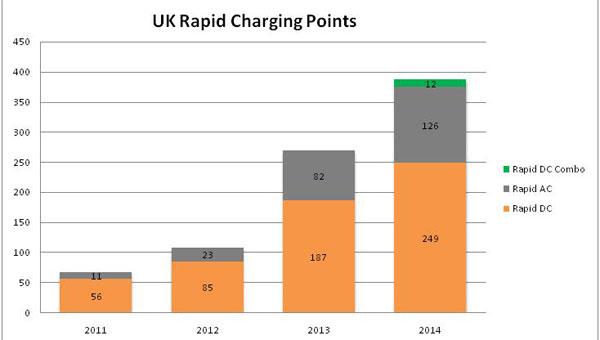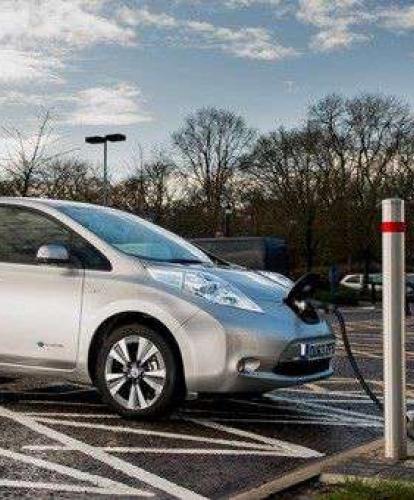The number of UK rapid DC and AC electric vehicle chargers is now close to 400, with a total of 387 charging sockets across 240 locations.
Data supplied by www.zapmap.com shows that the ratio of Slow (around 3kW), Fast (7-22kW) and Rapid (40-50kW) chargers in the UK has shifted dramatically over the last few years, changing in line with vehicle innovation and supported by government OLEV incentives.
According to the Zapmap figures, 2013/2014 saw a surge in installation of DC and AC chargers with each almost tripling since 2012, DC chargers increasing from 85 to 249, and AC increasing from 23 to 126 points.

Rapid DC chargers, which can be used by several EV models including the Nissan LEAF and Peugeot iOn, are rated at 50kW (125A), with most units provide a tethered cable with a JARI DC (CHAdeMO) connector.
Rapid AC chargers, which can be used by the Renault Zoe and some commercial EVs, are rated at 43kW (3-phase, 63A) with all units provide a tethered cable with a Type 2/Mennekes (IEC 62196) vehicle connector.
There has also been the introduction of Rapid DC Combo chargers, which can be used by the BMW i3
Chevrolet Spark, Volkswagen e-Up and the Volkswagen e-Golf. All units provide a tethered cable with a CCS connector. This is a Type 2 connector with two extra pins at the bottom to provide DC charging capabilities. The point will allow a rate of up to 50kW DC.
The benefit of rapid chargers is the short charging times allowed by the high power rates. For both DC and AC types, charging an EV on a rapid charger will typically take 30 minutes for an 80% charge (depending on battery capacity). Rapid chargers make the refueling experience for EVs closer to that of conventional vehicles by reducing charge times and in turn alleviating ‘range anxiety’.
An effective future charging strategy for EV owners is to use home or workplace chargers for overnight charging and then supplement this with rapid chargers to extend the cars daily driving range when required.
Until recently, rapid chargers were almost exclusively DC and found only in a handful of Nissan dealerships, with limited access for Nissan customers. Over the last few years, Nissan have been working with green electricity provider Ecotricity, to roll out a significant number of AC and DC chargers in strategic nationwide locations.
The Ecotricity network has focused on major motorway routes, with MOTO and Roadchef service stations being main target locations. Some motorways, such as the M4 and M5 have rapid chargers at every service station stop. What’s more they are all free to use until further notice!
Not content with ‘only’ 50kW power rates, Tesla have announced a European roll-out of 120kW ‘superchargers’ for Model S owners, which, provides around 5 miles range per minute. By the end of 2014, the company aim to build a supercharger network such that 90% of the EU population will be living within a 200 mile distance of a charging station (approximately the range of the Model S).



